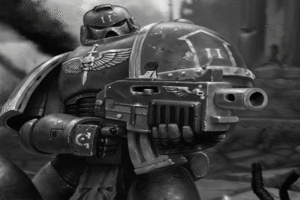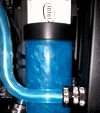
jscho
Member-
Posts
1,598 -
Joined
-
Last visited
Profile Information
-
Gender
Male
-
Location
Sydney, Australia
-
Interests
Enterprise hardware, networking and automation
-
Occupation
Sysadmin
System
-
CPU
AMD Ryzen 5 5600X
-
Motherboard
Asus 570X-I Strix
-
RAM
32GB Corsair Vengeance LPX
-
GPU
Asus RTX 2080 Super Strix
-
Case
CM NR200
-
Storage
2TB Samsung 870 EVO NVMe
-
PSU
Corsair SF600 Platinum SFX
-
Cooling
CM Hyper 212
-
Keyboard
Vortex Pok3r 60%
-
Mouse
Logi MX Master
Recent Profile Visitors
4,069 profile views
jscho's Achievements
-
Yayyyy, I can finally join the ranks! Hardware SERVER 1: IBM x3650 M2 DISK ENCLOSURE: Dell MD1000 CPU: (2x) Intel Xeon L5630 RAM: 96GB ECC DDR3L (6 x 16GB) RAID CARD 1: HP H221 HBA HDD 1: 2x 300GB 10k SAS - IBM branded HDD 2: 14x 1TB SAS - Dell Barracuda ES.2 (Seagate rebrand) Software and Configuration: The IBM server is running VMware ESXi 6.0, and I have FreeNAS 9.10 running in a VM. The boot drive is a virtual disk, but the FreeNAS VM has a PCIe passed-through HP H221 HBA (LSI 9207-8E rebrand), which is then connected to the Dell MD1000 chassis. For those wondering if FreeNAS is able to be virtualised; if used in this kind of fashion, then yeah totally! There has been many discussions of whether or not virtualised FreeNAS is recommended, but that's only because people do it wrong. ZFS needs hardware access to the drives (hence why people use 'IT mode' RAID cards, otherwise known as HBAs, or host bus adapters) and with used with PCIe passthrough, FreeNAS doesn't know the difference! Anywho, to the storage details I have the disks split into two arrays, one RAIDZ2 array of 10 1TB drives, then another 4 1TB drives in a RAID10. Usage: The RAIDZ2 array is to be a general purpose NAS. Media, documents and whatever is stored there. The RAID10 is a dedicated NFS storage array for my hypervisors. I have other servers with various different hypervisors that are going to use it for shared storage. Backup: No backup solution as of yet. Most of us Aussies don't have the luxury of fast connections for mass cloud backup, so I'm likely leaning toward an LTO-4 tape backup solution for now since it's getting so cheap. Cloud for important stuff like documents and photos should be fine though. Additional info: I did have a 15th drive in the arrray as a hotspare for the RAIDZ2, but I had a RAID10 disk failure literally this week. So I used the hotspare to replace the failed drive, hence the one empty drive bay in the photo. The whole setup is pretty much brand new. I haven't started loading all of my media to it just yet. My datahoarding days have only just begun Photos: Ignore the Dell C6100 in the middle, it's not a NAS It's a pretty neat piece of kit though! The hypervisors installed on it's nodes are what I plan on using the NFS RAID10 for.
-
Heyy, saw this over on /r/homelab. Such a clean setup, I love it. Those SA120 machines look fantastic, too. You've got me on the hunt for one now.
-
Well, RAM is volatile storage... It wouldn't work if your PC tried to store half of the data on something that will be erased upon powering down the system. It won't work, nor will it ever work. RAMdisks are cached to disk upon power down anyway...
-
Time to get your shit together bro, do it while you can, before you start working and/or attending more important classes.
-
You don't even need to do that. If you're in Windows, hold shift while clicking Restart in the Windows Start menu/screen, and you can navigate to an option to boot into the UEFI/BIOS
-
Possibly the GPUs (or PCIe slots) are still initialising at POST. Motherboards that support fast boot often skip over the POST checks of some things, say USB ports or PCIe slots to speed up the boot process. Maybe that's why you aren't seeing anything on your screen while the PC is starting up.
-
The XPS13 is a brilliant notebook. And it actually doesn't come with all that much Dell crap. It shouldn't be taking up that much space.
-
If you're getting the 4790k, don't get a H97 motherboard, get a Z97 board if you plan on overclocking. The H97 boards aren't big fans of OCing.
-
You'd be surprised how much IPv6 is being used already. Most modern home routers are using IPv6 addressing alongside IPv4 (I know my ISP's routers are compatible) Major companies like Google (and I think Facebook?) are trying to push IPv6 a bit more.
-
Probably identical, the only difference is that the cooler is offset to make room for GPUs
-
Do I need to download drivers for wired 360 controller?
jscho replied to c0d0ps's topic in Peripherals
It should be plug and play. -
The script just updates and generates the stats when a new build is put into the list :lol: Someone will add you eventually.
-
No output from motherboard audio jack. Possibly broken?
jscho replied to jscho's topic in Troubleshooting
Speakers and headphones working fine. Tried 3 pairs plugging directly into the jack. Well and truly dead haha. -
No output from motherboard audio jack. Possibly broken?
jscho replied to jscho's topic in Troubleshooting
Figured an audio jack was as hot swap as hot swap gets. I've got other ways of getting audio, just wanted to make sure that it was busted before I go fishing behind all the ties behind my desk to get at the cables. -
Hey all. I was listening to music a short while ago, and this is how my cables are set up. Motherboard > 2 metre 3.5mm cable > female to female 3.5mm adapter > headphones (because the cable on my headphones is super short and no stores nearby had a 3.5 extension) And when I want to use my speakers, which is what I was did just before, I switch the cables around. Motherboard > 2 metre 3.5mm cable > female to female 3.5mm adapter > cable to speakers > speakers. When I went to connect the speakers to the adapter, it detached, no worries. I went to plug it back onto the long cable, and I felt a buzz of electricity on the jack when I touched it. No more output. The only output I get is when you're doing that channel test in the sound control panel? Yeah, when testing the channels it's all buzzy and just shit. Dead jack? I may have shorted it.


















.thumb.png.71c6b7b4965ef71020742eab7010f8a5.png)
